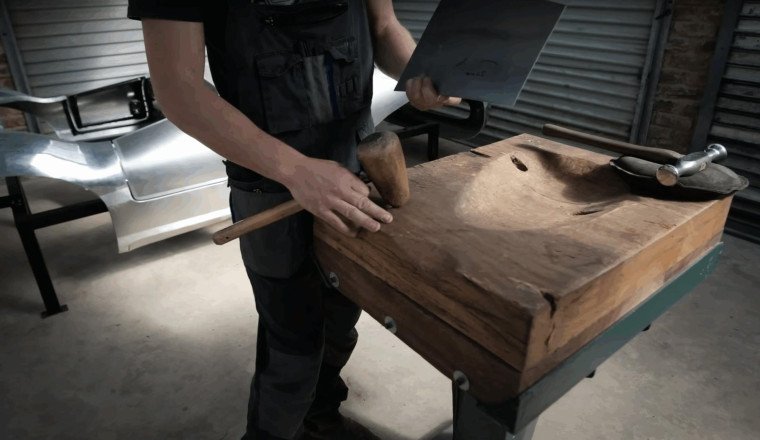
The art of building sultry cars is not completely lost, but modern design, materials, and production have taken something away from the process. The exterior skin of a car is typically not critical to the actual function of a car, yet it brings so much character to the final object that there is an undeniable hierarchy of panel construction. No one is going to argue that the plastic panels of a Saturn SL2 are comparable to the hand-formed panels of a Ferrari or Mercedes from the 1950s. And what was needed to create all of those gorgeous curves? A tree stump.
Metalworking and hand-forming sheet metal panels is a true art form. I know, I’ve tried. While specialist tools do exist—shrinking and stretching machines or English wheels, for example—there is seemingly no substitute for moving metal around with the most simple of tools: a hammer. A hammer alone is not very useful, though, as a lot of metal forming is done through careful and precise force against something. While special dies and bucks can be helpful, there is no replacement for a beefy chunk of wood secured to the floor.
I’ve managed to form a couple of compound curves from flat panels, which is something, but that puts me deep into the pile of rank amateurs that can make a mean dent with a hammer but struggle to take it back out. So don’t take my word about the utility of a stump: Instead, take the word of Martin Dejager of Coach Built Classics on YouTube, who has his aluminum resume sitting just behind the stump that created it.
Even at first glance, it’s clear the stump is not just a large, heavy object. Those two attributes sure help, but the features carved into the top surface enhance the functionality significantly. A large bowl shape is carved out to give pockets and angles for Dejager to shape metal against. To create the form, he used an angle grinder with a scary-looking chainsaw wheel, but it’s easy to imagine other methods to do the job, even if they are less efficient.
The shape in the stump might look fairly random, but each edge is actually carefully selected. One side is straight while the other curves; those two edges connect to two bowl ends—one shallow and the other much wider and deeper. By adjusting the placement of the workpiece in the bowls or on their edges, and varying the force and location of the hammer strikes, a flat piece metamorphoses through a wrinkled mess and into a relatively smooth, curved piece.
It sounds so simple, right? And I guess on some level it is. Dejager even shares the secret: Scrap. He says it will take three or four sheets of metal being formed into scrap before the power and capability of the stump will truly form inside one’s mind. Or as he put it, “Go build scrap metal, and then one day build a racecar.” Sounds like fun to me.















Facebook Conversations